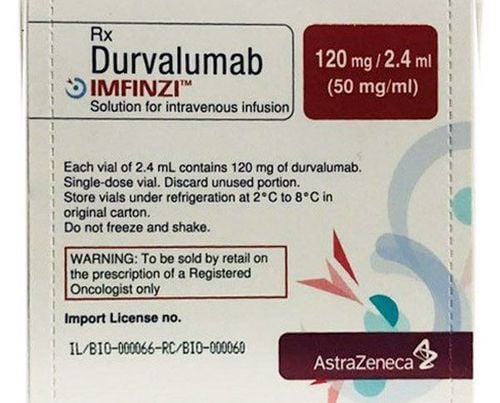This is an automatically translated article.
Article by Master, Doctor Nguyen Van Khanh - Pathologist - Laboratory Department - Vinmec Times City International Hospital
When the prostate is biopsied, the specimen is studied under a microscope by a pathologist. The pathologist will send your doctor the results of the diagnosis. The information in the pathology results will help the doctor make the best care plan. The questions and answers below can help you understand the medical language you often see in your prostate biopsy pathology results.
1. What does the biopsy result mean by the word “core”?
The most common type of prostate biopsy is a core biopsy. For this test, the doctor inserts a thin, hollow needle into the prostate gland. When the needle is withdrawn, a cylindrical piece of prostate tissue called the “core” is removed. This is usually repeated several times to take tissue samples from different areas of the prostate.
Your pathology results will list each “core” numerically (or alphabetically) by your pathologist, with each core (biopsy) having a unique diagnosis. If cancer or other abnormalities are found, it's usually not in all cores, so you should check all cores to see what's going on with you.
What does this mean if my biopsy results are benign prostate tissue, benign prostatic hyperplasia or benign prostatic hyperplasia? These diagnostic results mean that you do not have cancer. Benign prostatic hyperplasia is the term used to describe a common cause of benign enlargement of the prostate gland by an increase in the number of normal prostate cells. The older a man is, the more likely he is to experience this condition. However, if this term is used in a biopsy report, it has no bearing on the size of the prostate gland. It just makes sense that no cancer was found.
If my biopsy results do not say prostate cancer was found. Can I be sure I don't have prostate cancer?
A biopsy only takes a small amount of prostate tissue, so the biopsy may miss cancer. This is one of the reasons why doctors need to do multiple core biopsies from different areas of the prostate when they perform biopsies. But even with multiple cores, it still has the potential to miss cancer.
If the biopsy shows no cancer but the doctor has not yet determined that you are more likely to have prostate cancer (based on the characteristics of the rectal exam and the results of a high PSA blood test), your doctor Your doctor may recommend that you have another biopsy at some point in the future. Your doctor is the best person to discuss this with you.
What does this mean if my biopsy results show acute inflammation (acute prostatitis) or chronic inflammation (chronic prostatitis)? Most cases of prostatitis reported on biopsy are not due to infection and do not require treatment. In some cases, inflammation increases PSA, but it is not linked to prostate cancer.
What does this mean if my biopsy results refer to atrophy, gland disease, or atypical adenoma hyperplasia? All of these terms refer to lesions that the pathologist finds under the microscope to be benign (not cancerous), but they can sometimes look cancerous under the microscope.
Atrophy is the term used to describe a contraction of the prostate gland (when it is seen under a microscope). When the entire prostate gland is affected, it is called diffuse atrophy. Atrophy is usually due to endocrine causes or radiation therapy to the prostate. When atrophy affects only part of the prostate, it is called focal atrophy. Sometimes focal atrophy can look like prostate cancer under the microscope.
Atypical adenomatous hyperplasia (sometimes called adenomatous disease) is another benign condition that can sometimes be seen on prostate biopsies.

2. What does this mean if my biopsy refers to seminal vesicles?
The seminal vesicles are glands located just behind the prostate gland. Sometimes part of the seminal vesicle is also removed during the biopsy. This is not a matter of concern.What does this mean if my biopsy results refer to special tests eg high molecular weight cytokeratin, CK903, CH5/6, P63, P40, AMACR, 34BE12, PIN4 cocktail, or ERG?
These are special tests that pathologists sometimes use to diagnose prostate cancer. Not all patients need these tests, as whether or not your biopsy results refer to these tests will not affect the accuracy of your diagnosis.
Vinmec International Hospital Radiation Center has routinely performed radiotherapy for prostate cancer on the most advanced Clinac iX accelerator system (Varian Company, USA) today. Many patients achieve satisfactory results with few side effects, often making a full recovery after treatment. The clinics are fully equipped with high-tech and standard equipment, ensuring that patients are monitored, examined, and cared for comprehensively before, during and after radiation therapy.
Please dial HOTLINE for more information or register for an appointment HERE. Download MyVinmec app to make appointments faster and to manage your bookings easily.
Source: American Cancer Society













